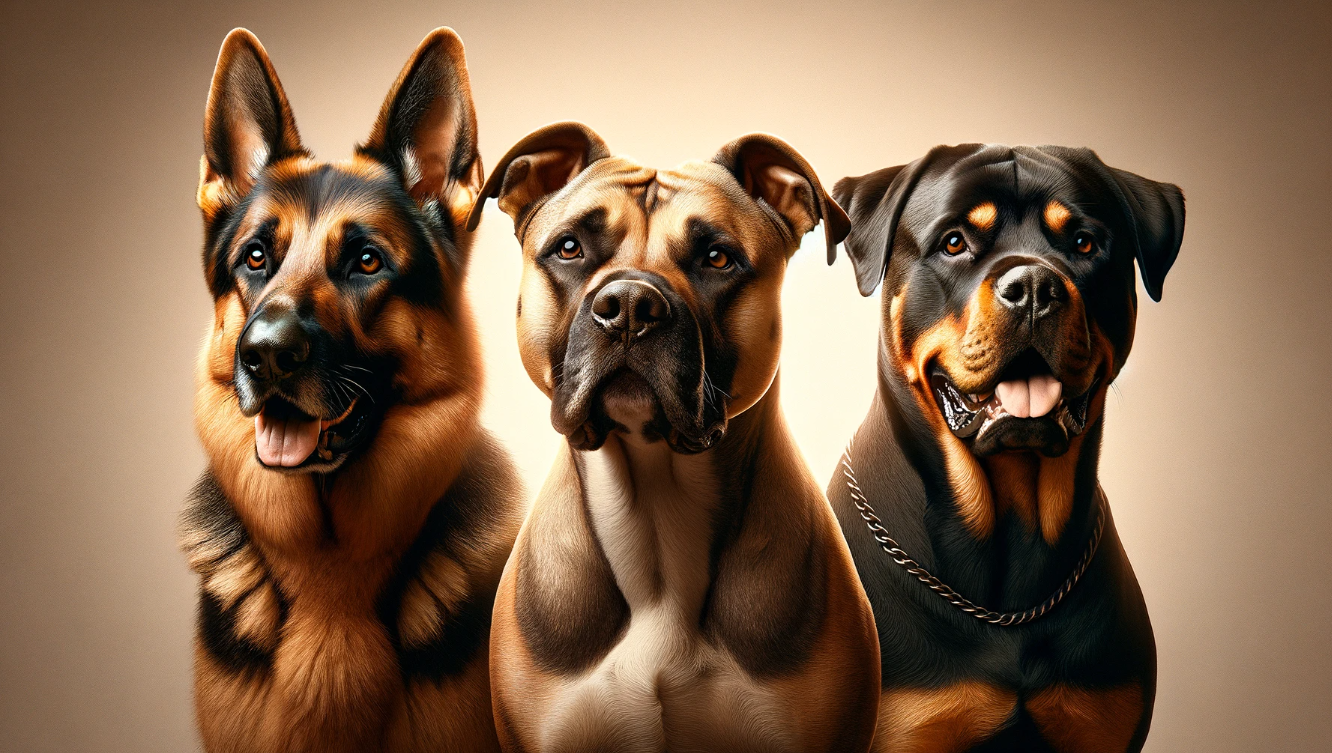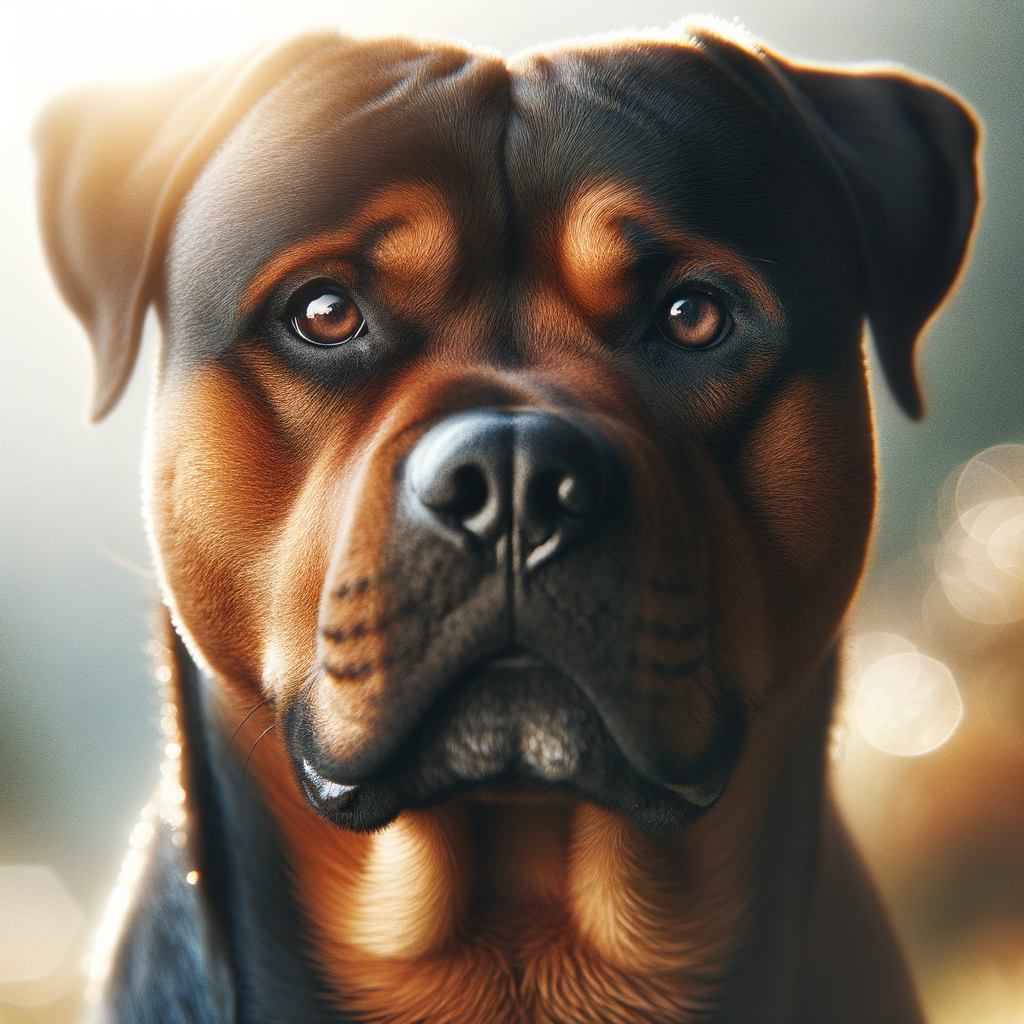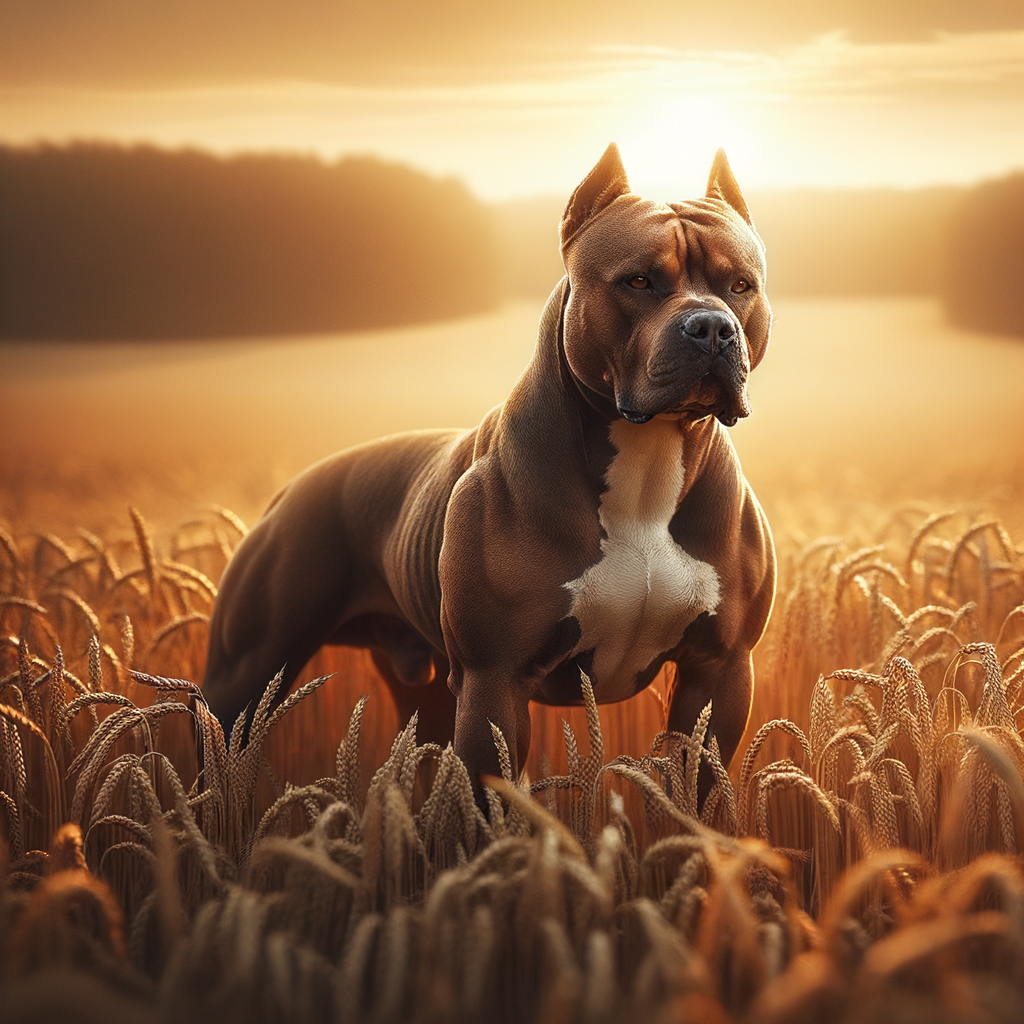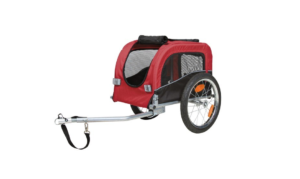The term ‘Most Aggressive Dog Breeds‘ often brings up images of snarling, fierce canines. But let’s remember, not all aggression is created equal! As a holistic veterinarian, I am here to tell you that understanding the nature of aggression in dogs is essential.

Dog aggression is a complex issue. It can be influenced by numerous factors like genetics, upbringing, medical issues, and environment. Just because a dog belongs to a certain breed that has been labeled as aggressive doesn’t mean they will be aggressive. A dog’s behavior always depends more on how they are raised and socialized.
Factors such as early life experiences, lack of socialization, physical pain, dominance issues, fear, and even certain health conditions can contribute to a dog’s aggressive behavior. Before labeling a dog as aggressive, it’s vitally important to understand these factors and address them appropriately.
Certain breeds, like Pit Bull Terriers, Rottweilers, and German Shepherds, have been labeled as the ‘most aggressive’ due to their strong temperament. However, it’s important to remember that with proper training and care, any dog can turn into a loving and well-behaved pet.
Over the course of this article, we’ll delve deeper into the characteristics of these breeds and why they’re often considered aggressive. Moreover, we’ll discuss various approaches to manage aggression in dogs and emphasize the importance of early socialization.
As we journey together, remember that understanding is the first step to compassion, patience, and responsible dog ownership. So, let’s dive in and explore the topic of the most aggressive dog breeds.
Defining Aggression in Dogs
Before diving headfirst into the realm of the most aggressive dog breeds, let’s take a moment to unravel the mystery of dog aggression, a misunderstood and often mislabeled canine behavior. Dog aggression is not merely an act of barking or growling, it’s a complex behavior rooted in various factors.
Types of Dog Aggression
Dog aggression can be divided into different types, each triggered by different factors. It’s crucial to understand this to comprehend why Fido might be turning fierce. Here are the most common types of dog aggression:
- Protective Aggression: Dogs are renowned for their loyalty, which can sometimes manifest as protective aggression. These dogs are driven by their instincts to protect their loved ones and territory from perceived threats.
- Fear Aggression: Fear can induce aggression in dogs. When a dog feels cornered or threatened with no escape route, it may resort to aggression as a defensive mechanism.
- Possessive Aggression: Some dogs become aggressive over possessions. This could be food, toys, or their favorite spot on the couch. This type of aggression is also known as ‘resource guarding.’
- Social Aggression: Dogs are inherently pack animals. When their social hierarchy is disrupted, it can lead to aggression, especially with other dogs.
Signs of Aggression in Dogs
Aggression in dogs can be subtle or overt, depending on the dog and the situation. Some key signs to look out for include:
- Growling and Snarling: One of the earliest signs of aggression, growling and snarling are often a dog’s way of saying, “Back off.”
- Showing Teeth: If a dog bares its teeth, it’s a clear sign it feels threatened and might attack.
- Biting: Biting can range from gentle nips (warning bites) to full-force attacks. Any form of biting is an explicit sign of aggression.
Remember, most dogs display signs of aggression either out of fear or to protect their territory and loved ones. It’s our responsibility as pet parents to recognize these signs and take appropriate steps to manage and reduce aggression.
Now that we’ve shone some light on what constitutes dog aggression, we’ll move forward to explore some of the breeds often labeled as the most aggressive. By understanding the roots of their aggression, we can work towards better management and possibly even transformation of these behaviors. Because every dog, regardless of breed, deserves to be understood and loved for who they are.

Top 10 Most Aggressive Dog Breeds: A Listicle
When discussing the most aggressive dog breeds, it’s crucial to remember that any dog, regardless of breed, can display aggressive behavior. However, some breeds are more prone to showing aggressive tendencies due to their genetic makeup and breed characteristics.
Brief Overview of Each Breed
- Pit Bull Terriers: Despite their reputation, these dogs are often loving and loyal pets. However, their powerful physique and history as fighting dogs can make them seem more aggressive.
- Rottweilers: Known for their guarding instincts, Rottweilers can be wary of strangers and protective of their family, which can lead to aggressive behavior if not properly socialized.
- German Shepherds: These dogs are intelligent and protective, often used in law enforcement and military roles. Their protective nature can sometimes manifest as aggression.
- Doberman Pinschers: Dobermans are known for their loyalty and intelligence, but they can be overly protective, leading to aggression if not properly trained.
- Chihuahuas: Despite their small size, Chihuahuas can be feisty and protective, often showing aggression towards strangers or other animals.
- Dalmatians: These dogs can be reserved and aloof, which can lead to aggressive behavior if they feel threatened or uncomfortable.
- Boxers: Boxers are energetic and playful, but they can also be protective and display aggressive behavior, particularly if not well socialized from a young age.
- Siberian Huskies: While typically friendly and good-natured, Huskies can show aggression due to their strong prey drive and independent nature.
- Great Danes: Their size alone can make them seem intimidating, but Great Danes can be protective and show aggression if they feel their family is threatened.
- Akitas: Known for their loyalty and protective nature, Akitas can be aggressive towards strangers and other animals if not well socialized.
Why These Breeds Are Considered Aggressive
Aggression in dogs can manifest for different reasons, and identifying these can help understand why these breeds are often labeled as most aggressive dog breeds. Many of the breeds listed, like the Pit Bull Terrier and Rottweiler, have been historically bred for their strength and protective instincts. Therefore, they can be more prone to aggressive behavior if their natural instincts aren’t managed correctly.
Smaller breeds, such as the Chihuahua, might seem surprising on this list. However, their aggressive behavior often stems from fear or anxiety and can be exacerbated if they’re babied or not correctly trained.
Breeds like the German Shepherd and Doberman Pinscher are highly intelligent and protective, traits sought after in working dogs. However, without proper training and socialization, these traits can lead to aggression.
It’s also important to consider the individual dog’s experiences and environment. Any dog, regardless of breed, can show aggression if poorly socialized, mistreated, or not adequately trained. Therefore, it’s essential not to stigmatize certain breeds as inherently aggressive but instead understand the factors contributing to aggression in dogs.
Pit Bull Terriers: A Closer Look
When it comes to the most aggressive dog breeds, Pit Bull Terriers often top the list. However, it’s crucial to explore their temperament, behavior, and the factors that contribute to their aggression to understand why.
Temperament and Behavior of Pit Bull Terriers
Pit Bull Terriers are incredibly energetic and playful. They’re known for their strength, determination, and they’re often fearless. However, each Pit Bull Terrier is a unique individual with his own personality. Some are friendly, outgoing, and affectionate, while others can be more reserved and protective. Pit Bulls are also extremely loyal to their families, which sometimes manifests as territorial or protective behavior.
When it comes to aggression, it’s important to mention that Pit Bull Terriers were originally bred for bull-baiting, a blood sport where dogs were used to immobilize bulls. When this sport was outlawed, they were often used in dog fighting, which required a high level of aggression. This history played a significant role in shaping the breed’s reputation.
Factors Contributing to Pit Bull Aggression
Like other breeds, several factors contribute to Pit Bull aggression:
- Genetics: While it’s a contentious issue, some experts believe that aggression in Pit Bulls can be attributed to genetics, considering their historic role as fighting dogs.
- Training and Socialization: A Pit Bull raised in a loving, stable environment and adequately socialized from a young age is less likely to exhibit aggressive behavior. Conversely, a Pit Bull that’s been mistreated, poorly trained, or not socialized is more prone to aggression.
- Environment: Environmental factors play a significant role. Pit Bulls that are neglected, abused, or trained to be aggressive are more likely to show aggression.
- Hormonal Factors: Unneutered males have higher aggression levels due to testosterone. Neutering can help reduce aggression.
Understanding the causes of Pit Bull aggression is one step towards dispelling the negative stereotypes that surround this breed. It’s important to remember that each dog is an individual, and breed alone doesn’t dictate behavior. With proper training, socialization, and a loving, nurturing environment, Pit Bulls can be just as kind and loving as any other breed.
As a dog parent, understanding your Pit Bull Terrier’s behavior and the factors contributing to their aggression can help you provide a safe, happy, and healthy environment for your four-legged family member. Remember, it’s not the breed but the owner that plays the most significant role in a dog’s behavior and temperament.

Rottweilers: Understanding Their Aggression
Rottweilers are a breed that often makes the list of the most aggressive dog breeds. But it’s important to remember that aggression doesn’t define a breed, and not all Rottweilers are aggressive.
Rottweiler Temperament and Behavior
Rottweilers are known for their confidence, courage, and self-assured nature. They are incredibly loyal to their families and have a natural instinct to protect their loved ones. This protective instinct can sometimes be mistaken for aggression, especially if the Rottweiler feels that their family is threatened.
Rottweilers are also highly intelligent and energetic dogs. They require plenty of mental and physical stimulation to keep them happy and healthy. If they become bored or don’t get enough exercise, they can become destructive or display aggressive behaviors.
Factors Contributing to Rottweiler Aggression
Just like with any dog breed, a variety of factors can contribute to aggression in Rottweilers. Here are a few key factors:
– Genetics: Some Rottweilers may have a genetic predisposition towards aggression. This doesn’t mean that all Rottweilers will be aggressive, but it does mean that some may be more prone to aggressive behaviors than others.
– Poor Socialization: Rottweilers need to be socialized from a young age to ensure that they are comfortable around people and other animals. If a Rottweiler is not properly socialized, they may become fearful or aggressive towards unfamiliar people or animals.
– Training: Rottweilers are a strong and powerful breed, and they need firm, consistent training from a young age. If a Rottweiler is not properly trained, they may become dominant or aggressive.
– Abuse or Neglect: Any dog that has been abused or neglected is more likely to display aggressive behaviors. This is not a reflection on the breed, but rather on the individual circumstances of the dog.
In conclusion, while Rottweilers can be aggressive, it’s important to understand that aggression is not a characteristic of the breed. Instead, it’s often a result of other factors such as genetics, lack of socialization, poor training, or abuse. With proper training, socialization, and care, Rottweilers can be loving, loyal, and well-behaved pets.
German Shepherds: A Study of Their Aggressive Nature
When we mention most aggressive dog breeds, German Shepherds often make the list. However, it’s important to remember that this doesn’t refer to all German Shepherds but rather a specific set of circumstances that can lead to aggressive behavior.
Temperament and Behavior of German Shepherds
German Shepherds are known for their intelligence, loyalty and versatility. These traits make them excel in a variety of roles such as police, guide, search and rescue, and military dogs. However, these same characteristics, when not appropriately managed, can result in aggressive tendencies.
German Shepherds are protective of their families and territory. If they perceive a threat, their natural instinct is to defend. They are also high energy and require regular mental and physical stimulation. A bored or under-stimulated German Shepherd can become anxious and display destructive or aggressive behavior.
Factors Contributing to German Shepherd Aggression
There are several factors that contribute to aggression in German Shepherds:
- Poor socialization: German Shepherds, like any dog breed, need to be properly socialized from a young age. Inadequate exposure to a variety of experiences, people, and other animals can result in fear-based aggression.
- Lack of training: German Shepherds are highly intelligent and thrive on structure and routine. Lack of proper training and mental stimulation can lead to behavioral problems, including aggression.
- Genetics: Aggression can be a hereditary trait. Dogs bred from aggressive parents are more likely to exhibit aggressive behavior themselves.
- Health problems: Pain or discomfort due to physical health issues can result in a dog becoming aggressive. German Shepherds are prone to certain health conditions like hip dysplasia and degenerative disc disease which can contribute to the development of aggression.
- Mishandling: German Shepherds respond poorly to harsh treatment, and this can result in reactive aggression.
It’s important to note that German Shepherds, like all dogs, are individuals. Not every German Shepherd will display aggressive behavior and many are wonderful, loyal pets. Understanding the factors that can lead to aggression and working to mitigate them can help ensure that your German Shepherd is well-adjusted and happy. Regular exercise, mental stimulation, positive reinforcement training, and regular socialization are critical in raising a well-behaved German Shepherd.

Managing Aggression in Dogs
Caring for the most aggressive dog breeds can be a challenging task, but it’s not insurmountable. The key is understanding their behavior and managing it appropriately. Let’s delve into some practical solutions.
Training Tips for Aggressive Dogs
Training plays a significant role in managing a dog’s aggressive behavior. Here are some tips:
- Consistency is key: Aggressive dogs thrive on structure and consistency. Make sure the rules are clear and consistent.
- Positive Reinforcement: Reward good behavior. This encourages the dog to repeat the desirable action. Treats, praise, or a favorite toy can serve as rewards. Avoid physical punishment as it often exacerbates aggression.
- Professional Training: If the aggression seems unmanageable, consider seeking help from a professional dog trainer or a canine behaviorist. They are equipped with techniques to handle aggressive behavior.
- Establish a Safe Space: Aggressive dogs often react out of fear or anxiety. Create a dedicated safe and quiet place for your dog to retreat when they’re feeling overwhelmed.
Remember, it’s not about curbing the dog’s personality, but rather managing their aggressive behavior so they can interact safely with others.
Importance of Early Socialization
Socialization is crucial for all dogs, but it’s especially essential for breeds prone to aggression. Early socialization exposes your dog to various scenarios, people, and other animals, thereby reducing their fear and uncertainty.
Here’s how you can socialize your dog effectively:
- Puppy Classes: These classes are a great way to socialize your dog from a young age. They’ll learn to play nicely with other dogs and be exposed to a variety of people and situations.
- Controlled Exposure: Regularly expose your dog to new experiences in a controlled manner. This could be a simple walk in a new environment, meeting a new person, or playing with a new toy.
- Gradual Introduction: If your dog is uncomfortable with a particular situation, person, or animal, introduce them gradually. Don’t force interactions and always allow your dog a way to retreat if they’re not comfortable.
- Positive Association: Make new experiences positive. If your dog behaves calmly in a new scenario or with a new person, reward them with a treat or praise.
Managing aggressive dog breeds can be a challenge, but with the right approach and dedication, it’s entirely possible to cultivate a healthy, happy relationship with your dog. Remember, the aim is to understand and manage their aggressive behavior, not to change who they are fundamentally.
The Role of Responsible Ownership
Dealing with most aggressive dog breeds requires responsible and committed ownership. As the saying goes, “there are no bad dogs, only bad owners.” This phrase might seem harsh, but it emphasizes the critical influence an owner has on a dog’s behavior.
Firstly, responsible ownership begins with understanding your dog’s breed and its temperament. As we’ve previously discussed, breeds like Pit Bull Terriers, Rottweilers, and German Shepherds are considered aggressive, but with the right approach and understanding, their aggressive tendencies can be managed effectively.
Secondly, providing sufficient physical and mental stimulation is vital. Many aggressive dog breeds are highly intelligent and energetic. Without proper exercise and activities to challenge their minds, they can become bored and potentially destructive.
Lastly, and most crucially, responsible ownership includes early socialization and training. Exposing your dog to different environments, people, and animals can help them become more comfortable and less reactive. And remember, training should be consistent, positive, and patient.
The Impact of Aggression on Dog and Human Relationships
The impact of aggression in dogs on their relationships with humans can be profound and often detrimental. Aggression can lead to fear and mistrust, damaging the bond between the dog and the owner. In severe cases, it can lead to injuries and legal issues. However, understanding that aggression is often a symptom of underlying issues can help improve these relationships.
Aggressive behavior in dogs often stems from fear, anxiety, or a lack of socialization. Providing a safe, supportive environment can help your dog feel more secure and less likely to exhibit aggressive behavior. Furthermore, professional help from veterinarians, behaviorists, or trainers can also be beneficial in managing aggression.
Remember, no dog is born aggressive. The most aggressive dog breeds can be loving, loyal companions if given the right care, training, and socialization. The key is understanding and tackling the root causes of aggression, rather than merely punishing the behavior.
Being a dog parent, especially to one of the more spirited breeds, is a journey filled with challenges and triumphs. You have the power to shape their behavior and, by extension, their life. Your understanding, patience, and love could transform the most aggressive dog breeds into the most loving companions.
As we’ve discussed, aggressive behavior in dogs is often misunderstood. It’s not about dominance or spite, but often, it’s a cry for help or a reaction to the environment. Understanding this is your first step towards a harmonious and loving relationship with your canine friend, even if they’re from one of the so-called “most aggressive dog breeds”.
So, here’s to responsible ownership and happy, healthy relationships with our furry friends. After all, they’re not just pets, but members of our family. And every family member deserves love, understanding, and respect.
Frequently Asked Questions
Q1: What are some of the most aggressive dog breeds?
Some of the most aggressive dog breeds include the Pit Bull, Rottweiler, German Shepherd, Doberman Pinscher, and the Bullmastiff.
Q2: Does a dog’s breed determine its temperament?
While a dog’s breed can give an indication of its potential temperament, it’s important to remember that individual dogs can vary greatly. Training, socialization, and treatment can all significantly impact a dog’s behavior.
Q3: Are aggressive dog breeds dangerous to have as pets?
Any dog, regardless of breed, can be dangerous if not properly trained or socialized. However, breeds known for their aggression may require more careful handling and experienced ownership.
Q4: Can aggressive dog breeds be trained to be less aggressive?
Yes, with proper training and socialization, aggressive dog breeds can become less aggressive. However, it’s important to start training as early as possible and to be consistent.
Q5: Are there any laws or restrictions related to owning aggressive dog breeds?
Some cities and countries have restrictions or bans on certain breeds known for their aggression. It’s important to check local laws and regulations before deciding to get a specific breed.
Dr. Candy, a holistic veterinarian and certified raw dog food nutrition specialist, graduated from Oklahoma State University in 2009 with a DVM and has since specialized in companion animal nutrition, advocating for species-specific diets. With a background in wildlife rehabilitation and oil spill response, she combines holistic health and conventional medicine in her unique approach to treating chronic diseases, allergies, and autoimmune conditions in pets. As the owner of a veterinary practice in Colorado and an author, Dr. Candy is dedicated to educating pet parents and improving the health and happiness of animals.




